Day 15 (Mon, Oct 1):Transfer to Rome/Civita di Bagnoregio
Absolutely glorious weather. We left Orvieto at 9:00 on a route that gave us beautiful views of the town. We passed through lovely countryside, wooded with oaks, with large fields and sheep pastures, into Lazio (Latium in Latin), the region which neighbors Umbria. In the map above, you can barely make out the name "Orvieto" above the town of Porano near the top of the map. Below Porano is Bagnoregio, our immediate destination. Ultimately, we're headed for Lido di Ostia, the name of which is barely visible southwest of Rome.
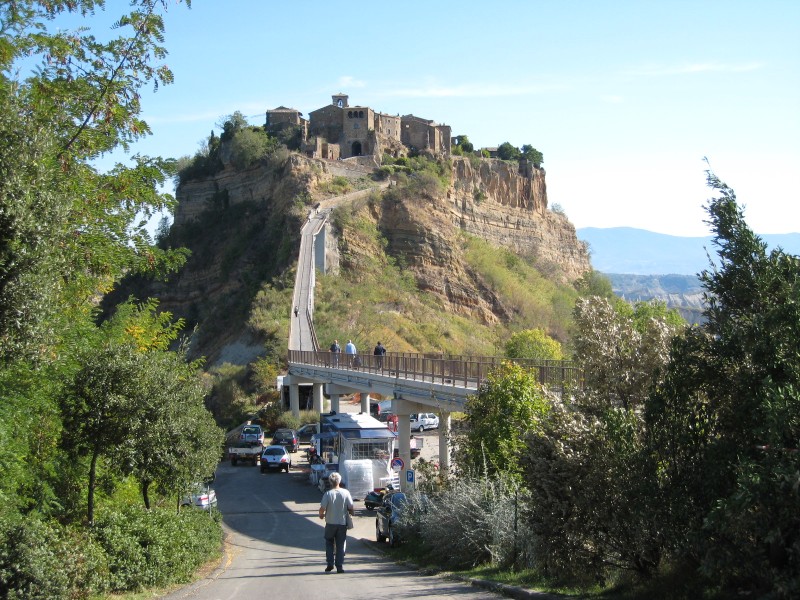
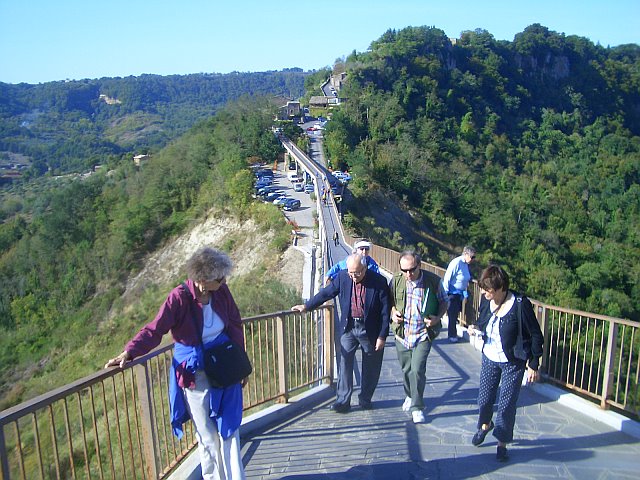


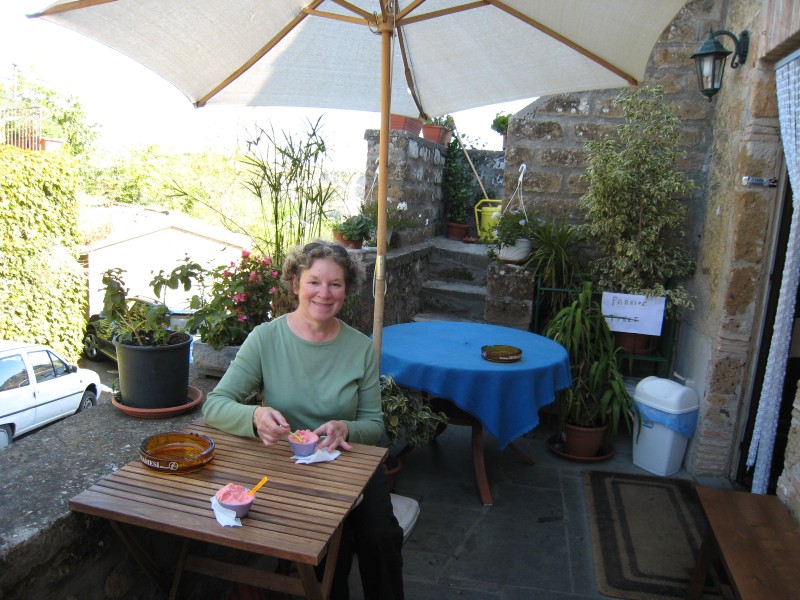
|
In Bagnoregio (bahn-yo-RAY-joh, literally Royal Bath because the Roman emperors used to come here for the waters) we visited a little open-air market, then took a smaller bus through town to the footbridge which led to Civita Bagnoregio (chi-VEE-ta), a spectacular (there's no really adequate word to describe it) hill town that has been inhabited for 15,000 years. The bridge spans a deep valley from which we could hear dogs barking, shouts of "maiale" and occasional gunshots -- a wild boar hunt, of course. Being animal lovers, we side with the boars, but at present there are too many of them, so hunting has its place. And Italians eat boar meat, so there's no waste.

|
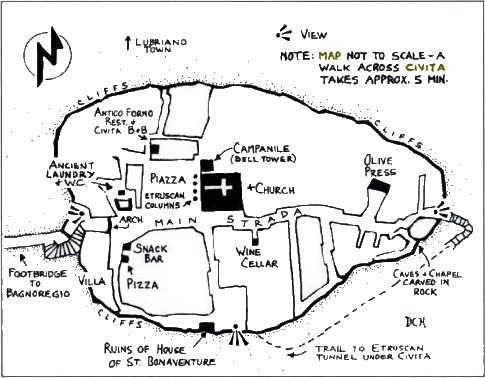
|
When I had walked about halfway across and up the bridge, my rapidly beating heart suggested retreat would be the better part of valor. Karen continued into the town. There was a film crew working on an action sequence with motorcycles bouncing down the steps toward the bridge. The crew was very polite and didn't make the Elderhostelers wait long. Civita Bagnoregio is lovely, surrounded on all sides by wild and dramatic landscapes. It was the birthplace of the famous Franciscan St. Bonaventure. Karen bought a lovely "fake Etruscan" blackware vase at the souvenir shop, admired the Church (San Donato, the cathedral until 1699), which presides over a graveled piazza, said Buongiorno to one of the old ladies who permanently occupy the place (the official population is four: two old couples). She returned a little ahead of the group and joined me for a gelato.
There was an interesting scene when our bus returned to pick us up. Another tour group, Italians, tried to hijack our bus. The intruders were fought off effectively by our driver, who tooted his horn and maneuvered them out of the way while we cheered and stared threateningly, restrained by Genna. Genna also applied some charm and reason with the Italian tour guide, whom she later criticized for not having proper control of his group. How does one control Italians?

|
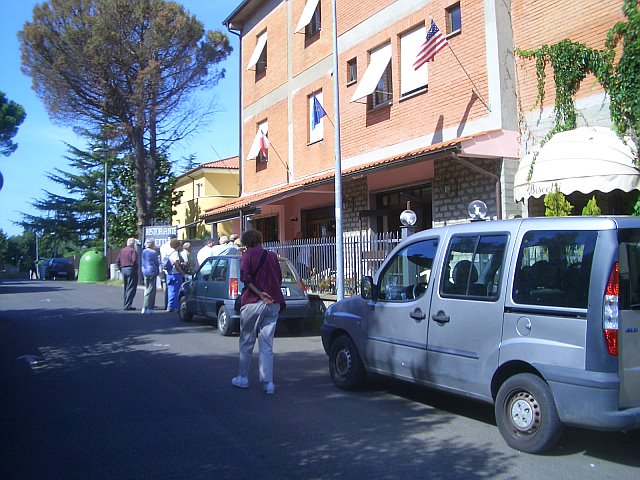
|
| Satellite Palace Hotel - Ostia, Rome - ★ ★ ★ ★ | |||||||
 Lazio Regione |
 Satellite Palace Lido di Ostia |
 exterior |
 lobby |
 bedroom |
 bar |
 restaurant |
 restaurant |
The dinner was excellent. We shared a table with Frank, Giannina, Babette and Helen. Said our goodbyes to the rest of the group, most of them with real regret. They were an excellent bunch -- the most punctual set of people ever (our guides said so, too).
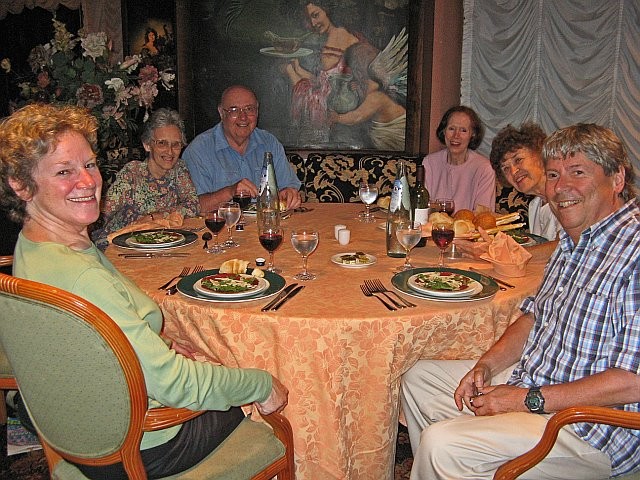
The Last Supper: Karen, Giannina and Frank Mooney, Babette Marcus, Helen Kinsley, me |
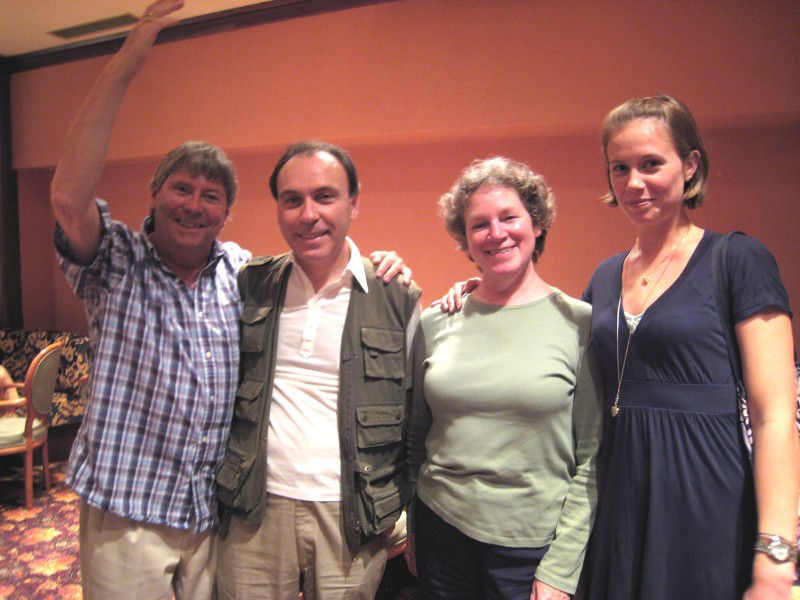
Grazie ed Arrivederci, Marco e Genna! |